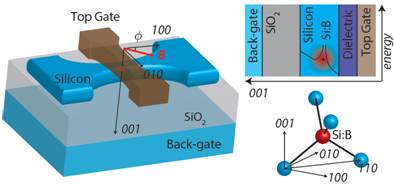| Brief Bio of the Speaker | Dimitrie Culcer obtained his PhD from the University of Texas at Austin in 2005. He worked as a postdoctoral research fellow first at Argonne National Laboratory between 2006-2008, and subsequently at the University of Maryland, College Park, 2008-2010. He became a faculty member at the University of Science and Technology of China in 2010, where he was a member of the International Center for Quantum Design of Functional Materials. In 2013 he moved to the University of New South Wales in Sydney where he is currently a Senior Lecturer. His research interests include quantum information and computation, spin-orbit coupling and topological effects in condensed matter physics, quantum transport theory and electron-electron interaction effects, in particular the interplay of interactions with strong spin-orbit coupling. He is actively working in all these areas. |
Abstract | Electrical control of quantum bits could pave the way for scalable quantum computation. An acceptor spin qubit in Si, based on spin-3/2 holes, can be controlled by electrical means using a gate electrode, which offers fast one- and two-qubit rotations and long coherence times at certain sweet spots. The relaxation time T1, while allowing 105 operations, is the primary limiting factor [1]. I will show that, due to the interplay of the Td symmetry of the acceptor in the Si lattice and the spin-3/2 characteristic of hole systems, an applied in-plane magnetic field strongly enhances the performance and coherence properties of the qubit. An appropriate choice of magnetic field orientation leads to a near-total suppression of spin relaxation as well as full tunability of two-qubit operations in a parameter regime in which dephasing due to charge fluctuations can be eliminated. Interestingly for spintronic applications, we find an extreme in-plane anisotropy such that the in-plane g-factor can vanish under certain circumstances [2]. References [1]J. Salfi, J. A. Mol, D. Culcer, and S. Rogge, Physica Review Letters 116, 246801 (2016). [2]J. C. Abadillo-Uriel, J. Salfi, X. Hu, S. Rogge, M. J. Calderon, and D. Culcer, arXiv:1706.08858 
|
